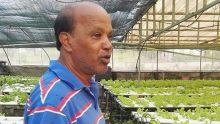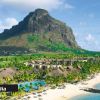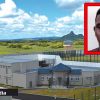
It has often been stated that by tapping the different alternative sources of renewable energy, our island can in the long run become completely energy self-sufficient.
How soon we accelerate the use of new and renewable energy resources is critical. Professor Soodursun Jugessur tried to develop Wave Energy in the 70’s but did not get the support of the authorities. However, as it is commonly said: “None is a prophet in his own country.”
A wave monitoring device, aiming to explore the prospects of developing wave energy for Mauritius and harness the potential of ocean energy, was deployed on 27 June 2016 in Souillac. This initiative follows the Collaborative Agreement signed in June 2015 by the Mauritius Research Council (MRC) with Carnegie Wave Energy Ltd on the prospects of developing wave energy for Mauritius. Based in Australia, Carnegie Wave Energy Ltd is a leader in wave energy technology and harnessing wave energy for the production of electricity and desalinated water.
In the 1950’s CEB Director A. N. Bott first thought of tapping wave energy, but his project did not materialise, as he wanted to construct a dam anchored on the reef around Riambel, a reef structure that is highly porous and would not allow the water to be contained in the proposed dam. Water from the dam was expected to run low-head turbines for electricity generation. The immense problems of construction on the reefs and the fact that cyclones could affect the entire infrastructure forced the CEB abandon the project.
The system that is presently proposed and that is already used by a private company, the Carnegie Wave Energy, developed in Western Australia at Perth. It is named after CETO, a Greek sea-goddess, and is often referred to as the CETO plant. This produces both CO2 zero-emission electricity and zero-emission desalinated potable water.
How it works
It has a series of buoys ten or more meters below the surface, moving by the impact of the waves, and are anchored on the sea-bed. As such the system is free from the effects of cyclones. The waves move the submerged buoys that drive mechanical pumps that push high pressure water jets to electric generators that produce electricity. The system is environmentally friendly and attracts fish that can be caught by fishermen on the surface. Boats and surface sports can be practised safely in the area as the entire system is much below.
Professor Soodursun Jugessur tells us that the wave energy program started at the University of Mauritius in the 1970’s, a study of the wave energy potential in the South of Mauritius, with the assistance of a research grant from the Commonwealth Science Council, was undertaken. The results were encouraging for pursuing the program further. However, because of global changes in the price of energy and costly initial investments, it stalled as it was economically more viable to buy mineral fuels and use the limited sugar-cane bagasse that were available.
“As leader of the program, I myself had to leave the country for working at the United Nations to promote science and technology,” he says. Hence the project stopped after the wave recordings had been completed. It only ended up in scientific publications, but also enhanced the knowledge of the people, especially the researchers on local energy generation.
The researcher tells us that globally, much progress has been achieved in tapping wave energy. The new study is necessary after such a long time to re-establish the wave energy potential more accurately. The new apparatus is more sophisticated in its electronics and can send the wave data live through the internet to a computer.
The Mauritius Research Council where the project was reactivated can now analyse the wave data more accurately from its own office. Once the wave energy potential data have been estimated, the Carnegie Wave Energy company will design the buoys, pumps and generators accordingly. The onshore building will house the generators, desalination pipes for water distribution and the control system to link up to the national grid system.
How he intends to support this new project. Yes, I do. As I said earlier, the new partner is Carnegie Wave Energy of Australia, with whom we have long correspondence. The Director General of the Mauritius Research Council, Dr Arjoon Suddhoo visited the site in Australia. Carnegie Wave Energy has been successful in not only producing electricity but also desalinated potable water in commercial exploitation in other places. CETO has a plan for a 10-15 MW plant in England, and has projects in pipeline in Ireland, Canada, Bermuda, Chile, and much nearer us in Reunion. It is especially suited for remote islands.
“The government seems to give full support to this project that can reduce our carbon dioxide release in line with agreements at the Paris Climate change (COP 21) meeting last year, and make us save much in our energy production and importation bills,” says Prof Jugessur.
Contribution of Wave energy to Mauritius.
“The exact contribution can be mentioned only after the feasibility study that is still due,” says the scientist. Wave energy produced can be of the order of fifteen to twenty megawatts initially, he explains. “CETO has succeeded in improving its designs over the years, and we can expect to have the latest by the time the plant starts operating.” The Mauritius version will be a micro-grid system that incorporates wave energy, suitable for decentralizing electricity production and distribution.

Notre service WhatsApp. Vous êtes témoins d`un événement d`actualité ou d`une scène insolite? Envoyez-nous vos photos ou vidéos sur le 5 259 82 00 !






















